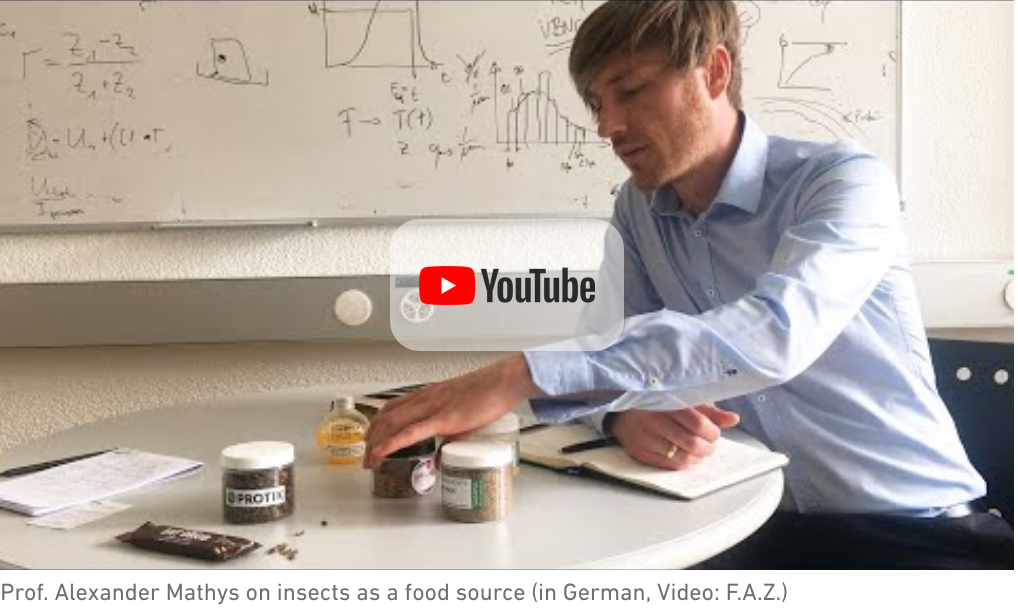Using insects to turn waste streams into feed
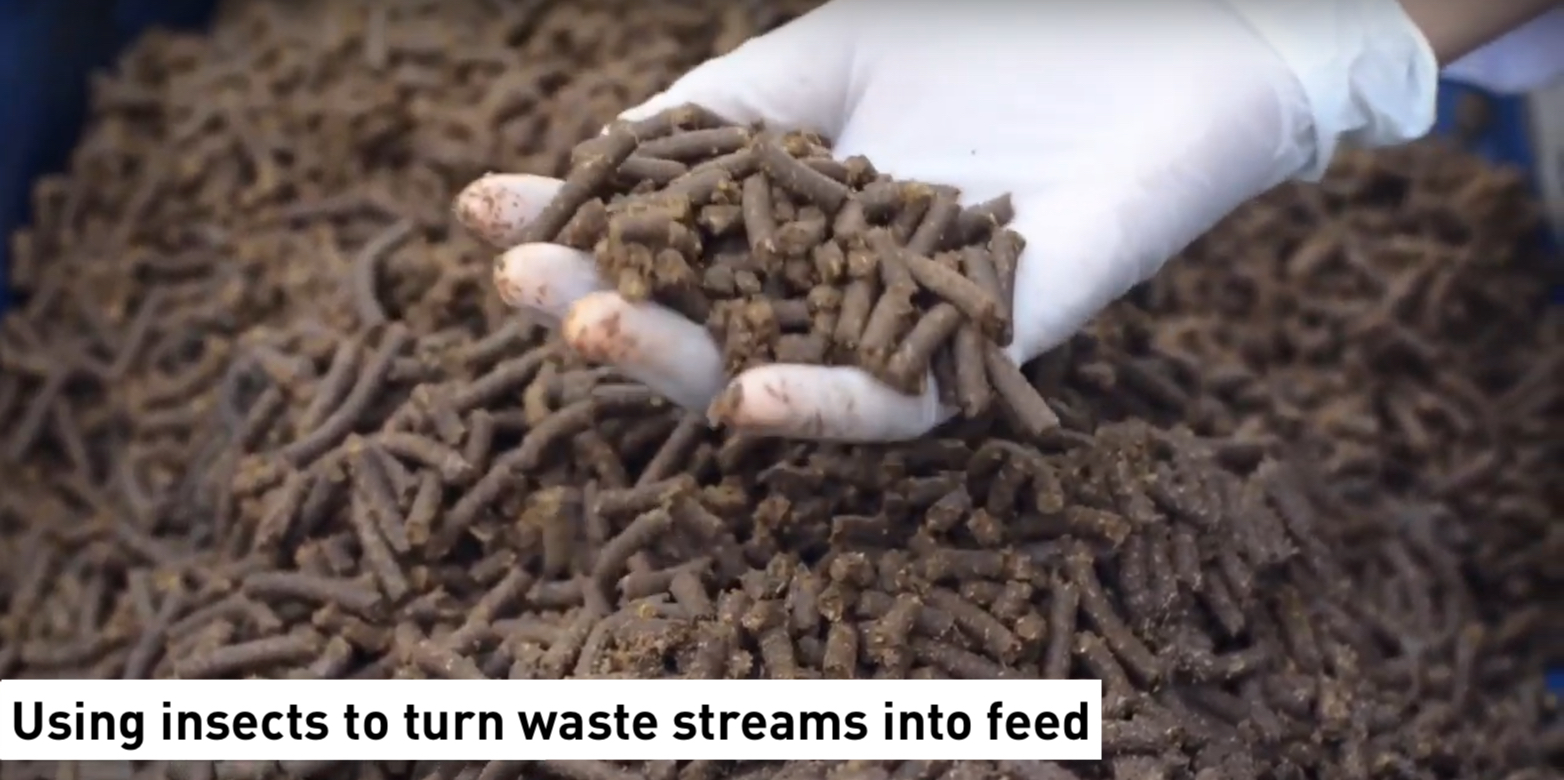
Black soldier fly larvae treatment is an emerging technology for the conversion of biowaste into potentially more sustainable and marketable high-value products, according to circular economy principles. Unknown or variable performance for different biowastes is currently one challenge that prohibits the global technology up-scaling.
Innovation goal
To identify, design and validate processes to enable insect proteins for use as feeds.
Research highlights
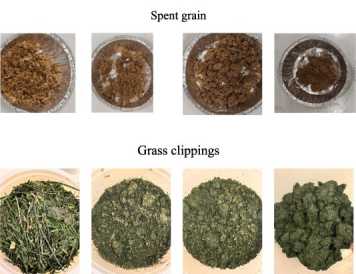
This study explores methods to improve the processing of fibrous biowastes by black soldier fly larvae (BSFL). Specifically, it investigates two pretreatment techniques: thermal and mechanical. Contrary to expectations, thermal pretreatment did not improve larval performance and, in some cases, even decreased it. However, mechanical pretreatment, involving milling with different screen sizes, showed promising results. It increased bioconversion rates and larval protein conversion on certain substrates. Interestingly, mechanical pretreatment did not affect fiber degradation, highlighting its potential in enhancing BSFL bioconversion of fibrous biowastes.
external page Physical pretreatment of three biowastes to improve black soldier fly larvae bioconversion efficiency by Peguero, D. A. et al. (2024)
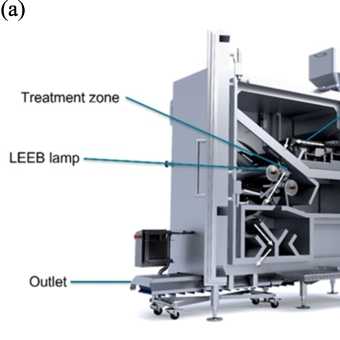
Product safety is a major concern when using edible insects and insect-derived products due to insects’ diverse microbial community. As commonly used thermal treatments are effective against microorganisms but can have negative effects on product quality and nutritional value, low-energy electron beam (LEEB) is an emerging non-thermal surface treatment technology that preserves product quality. This study assesses the effectiveness of LEEB treatment by conducting three separate experiments with dried black soldier fly larvae (BSFL) and yellow mealworm (YMW).The results conclude that LEEB can be an effective and gentle processing technique to support safe dried insect products.
external page Low energy electron beam to support safe whole dried insect products by Peguero, D.A. et al. (2023)
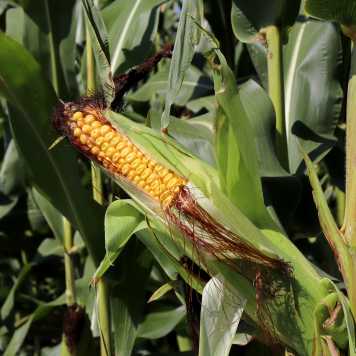
This study aims to evaluate whether quality feed and fertilizer can be safely produced from naturally mycotoxin contaminated crops using black soldier fly larvae (BSFL) under realistic field conditions in East Africa as Mycotoxin contamination results into economic and health issues. This leads to an urgently needed valorisation options of contaminated crops. The results show that it is possible to produce feed and fertilizer with BSFL considered safe within the European Union and East African legal limits with maize contaminated with mycotoxins typical for East Africa. Thereby, this research works towards the safe recycling of nutrients from mycotoxin contaminated maize within the food system in East Africa and beyond.
external page Conversion of mycotoxin-contaminated maize by black soldier fly larvae into feed and fertilizer by Gold, M. et al. (2023)
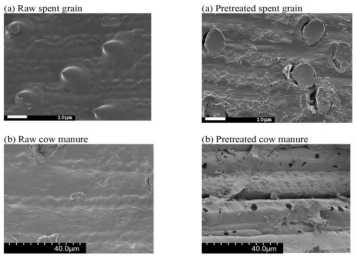
Biowaste treatment with black soldier fly larvae (BSFL, Hermetia illucens L.) can promote a more sustainable food system by reusing nutrients that would otherwise be wasted. However, many agri-food wastes and byproducts are typically high in lignocellulosic fibers, making it resistant to efficient larval and/or microbial degradation. Ammonia pretreatment could be used to partially degrade lignocellulose, making the biowaste more easily degradable by the larvae and/or microorganisms. This study evaluated ammonia pretreatment for lignocellulose degradation and its effect on BSFL performance on four fibrous biowastes: brewers spent grain, cow manure, oat pulp, and grass clippings.
external page Evaluation of ammonia pretreatment of four fibrous biowastes and its effect on black soldier fly larvae rearing performance by Peguero D. A. et al. (2023)
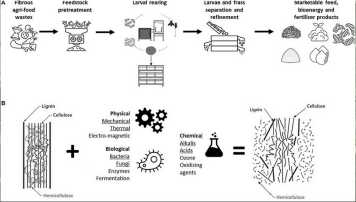
The use of the larvae of the black soldier fly (BSFL), Hermetia illucens L., which can grow and convert a wide range of organic waste materials into insect biomass with use as animal feed, fertilizer and/or bioenergy could be an alternative solution to face challenges associated with agri-food waste management which will be intensified with an increasing food demand. But an existing concern is that substrates with high lignin and cellulose contents have demonstrated poor digestibility by BSFL. This paper provides a state-of-the-art review on the potential pretreatment methods that may improve the digestibility of substrates by BSFL and consequently the production of BSFL.
external page A Review of Pretreatment Methods to Improve Agri-Food Waste Bioconversion by Black Soldier Fly Larvae by Peguero A. A. et al. (2022)
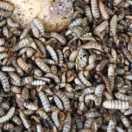
Two new protocols for reseach with black soldier fly larvae published. The first is a method to produce viable, sterile black soldier fly larvae and a gentle method for diet sterilization. The second proposes a novel method to collect frass from individual larvae.
external page Novel Experimental methods for the investigation of Hermetia illucens (Diptera: Stratiomyidae) larvae by Gold, M. et al. (2020)
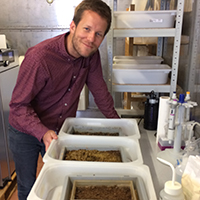
Study is first to simulate midgut digestion for black soldier fly larvae (BSFL) to estimate biowaste conversion performance. BSFL diet intake and midgut region residence times were determined.
external page Estimating black soldier fly larvae biowaste conversion performance by simulation of midgut digestion by Gold, M. et al. (2020)
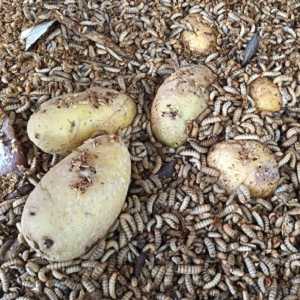
Using detailed nutrient analyses, this study assessed whether mixing biowastes to similar protein and carbohydrate contents increased the performance and reduced the variability of black soldier fly larvae treatment in comparison to the treatment of individual wastes.
external page Biowaste treatment with black soldier fly larvae: Increasing performance through the formulation of biowastes based on protein and carbohydrates by Gold, M. et al. (2020)
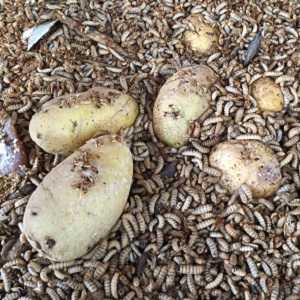
Life cycle assessment (LCA) of food industry side streams transformation via black soldier fly into intermediate products applicable for feed and food purposes. Further sensitivity analyses identify the most promising directions towards sustainable insect production and estimate the magnitude of impact reductions if those directions are pursued by the industry.
external page Sustainable use of Hermetia illucens insect biomass for feed and food: Attributional and consequential life cycle assessment by Smetena S. et al. (2019)
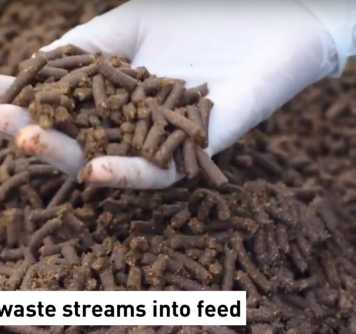
Processing of biowaste with larvae of the black soldier fly is an emerging waste treatment technology. Based on this review, formulating different types of biowaste, e.g. to produce a diet with a similar protein content or treatment of biowaste with beneficial microbes, has the potential to increase process performance.
external page Decomposition of biowaste macronutrients, microbes, and chemicals in black soldier fly larval treatment: A review by Gold, M. et al. (2018)
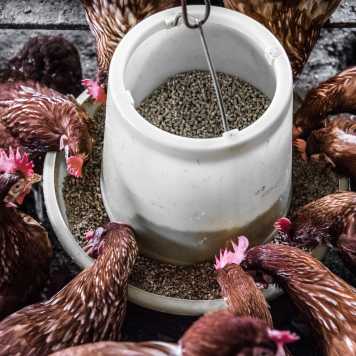
The project "Black Soldier Fly larvae reared on various substrates as novel protein source: Utility and constraints of use in the nutrition of organic laying hens and broilers" (Hen and Fly) aims to investigate and identify ways and constraints of including insect material of different origin and composition into organic diets for growing and laying poultry.
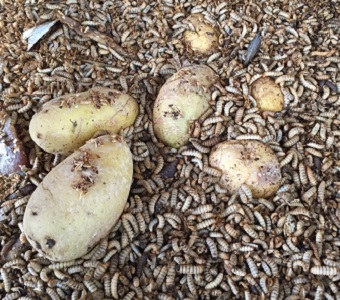
Replacing soybeans with insects in egg and poultry meat production could improve environmental sustainability. Black soldier fly larvae (BSFL) have a favorable nutrient composition and can be reared on low-grade waste, but this is associated with the risk of feed and food contamination. The aim of this paper was to assess the transfer of selected contaminants from larval substrates to poultry-derived food by using two different control substrates with different amounts of contaminants.
external page Low transfer of cadmium, lead and aflatoxin B1 to eggs and meat of laying hens receiving diets with black soldier fly larvae reared on contaminated substrates by Heuel M. et al. (2023)
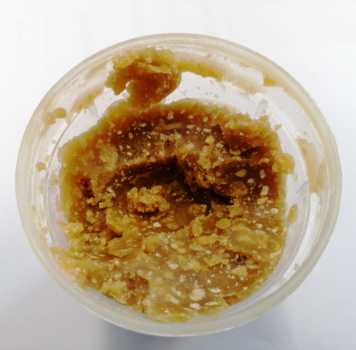
Currently, there is a great interest in finding alternative protein and energy sources to replace soybean-based feeds in poultry diets. The main objective of the present study was to completely replace soybean in layer diets with defatted meal and fat from black soldier fly larvae without adverse effects. To study this objective hens were fed either a soybean-based diet or diets based on defatted black soldier fly larvae meal and fat from two different producers.
external page Black Soldier Fly larvae meal and fat can completely replace soybean cake and oil in diets for laying hens by Heuel M. et al. (2021)
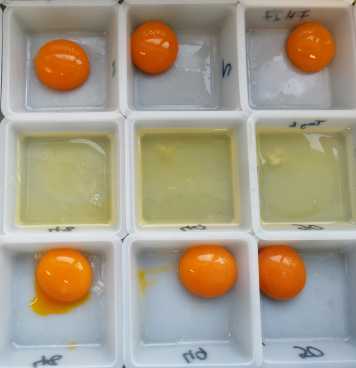
Implementing insects, such as the black soldier fly larvae (BSFL), as animal feed commonly includes the previous removal of substantial amounts of fat. This fat may represent an as yet underutilized energy source for livestock. However, transfer of lauric and myristic acid, prevalent in BSFL fat and undesired in human nutrition, into animal-source foods like eggs may limit its implementation. To quantify this, a laying hen experiment was performed comprising five different diets (10 hens/diet).
external page Transfer of Lauric and Myristic Acid from Black Soldier Fly Larval Lipids to Egg Yolk Lipids of Hens Is Low by Heuel M. et al. (2021)
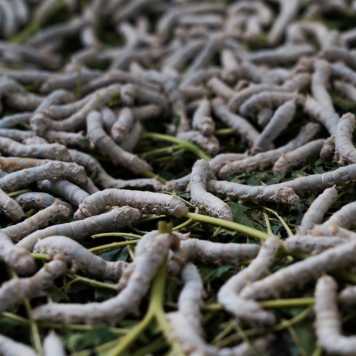
Multi-objective optimization (MOO) algorithms for finding optimal options for complex system functioning can provide a valuable insight in the development of sustainable insect chains as these can be complex with non-linear links between different variables. This review proposes a framework for MOO application that is based on gradual implementation, beginning with factors that have an immediate impact on insect production, and progressing to integrated units such as environmental, social, and economic impacts. The review thereby, introduces key hotspots of insect production chains. Modeling and further testing on real insect production chains would be necessary to determine the framework’s applicability and the specific MOO algorithms that can perform the function.
external page Optimization models for sustainable insect production chains by Mouhrim, N. et al. (2023)
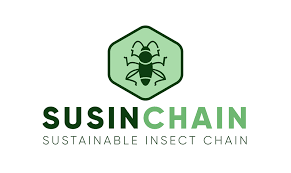
Principal Investigator Prof. Alexander Mathys attended the kick-off meeting in October 2019 of the EU Horizon 2020 project entitled external page SUStainable INsect CHAIN. It focuses on novel protein provision from insects for feed and food in Europe by overcoming the remaining barriers for increasing the economic viability of the insect value chain and opening markets. Doctoral student Daniela A. Peguero has joined the research group at ETH Zurich to work on the project.
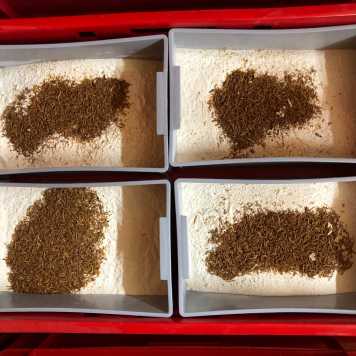
The project "Measurement and optimization of iron bioavailability in sustainably produced insect based foods: estimation of the nutritional potential as alternative dietary iron sources in human subjects" (Sust-iron-able) strives to quantify the potential of different insect species as sources of highly-bioavailable dietary iron in humans, and to develop and test an insect-based food to maximize iron absorption and delivery.
Outreach & media highlights
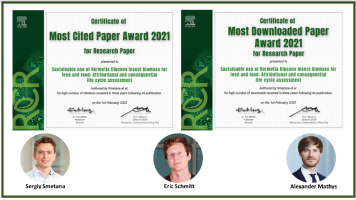
Sergiy Smetana, Eric Schmitt and Alexander Mathy won the RCR's 2021 Most Downloaded Paper Award for "external page Sustainable use of Hermetia illucens insect biomass for feed and food: Attributional and consequential life cycle assessment".
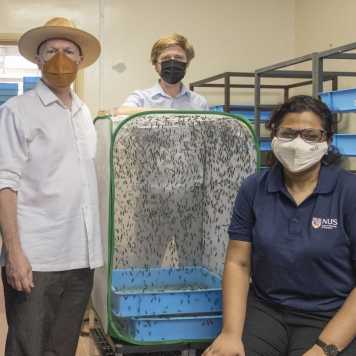
NUS Press Release on new interdisciplinary team to develop blueprint for sustainable urban food waste management and food systems using black soldier flies. The three-year research project to increase viability and sustainability of food production in Singapore by capturing value in food waste. external page News
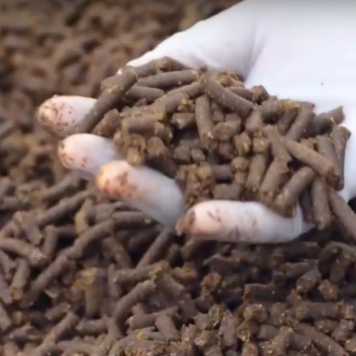
Swiss business and financial newspaper L'Agefi article focuses on insects as a sustainable source of nutrients. Alexander Mathys comments on use of insects to produce nutritious fish feed. external page L'Agefi(FR)
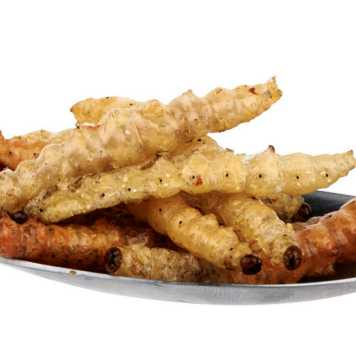
Got iron? Team at Fernfachhochschule Schweiz, ZHAW Zurich University of Applied Sciences & ETH Zürich investigating iron bioavailability in insect-based foods, looking for sources of sustainable dietary iron for humans. Project featured in FHHS news (in DE): external page https://www.ffhs.ch/de/ffhs/news/artikel/2020-06-23-50000-kaefer-arbeiten-fuer-die-ffhs-forschung
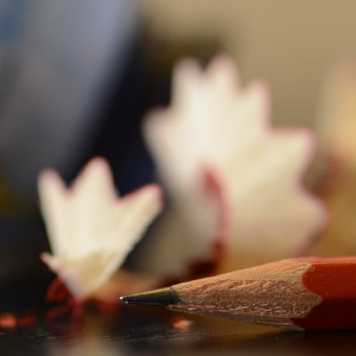
In Kenya, fly larvae convert organic waste into animal feed. Engineering for Development (E4D) scholar, Moritz Gold works to bring the process to a viable scale. Read more in the ETH Ambassadors Blog
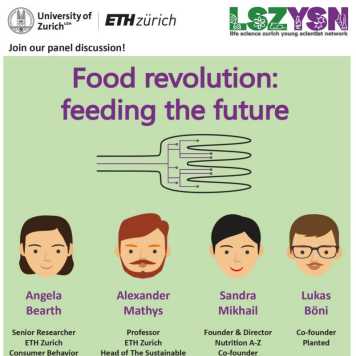
Life Science Zurich Young Scientists Network panel discussion "Food revolution: feeding the future" including Prof. Alexander Mathys and Dr. Angela Bearth. Watch the discussion here
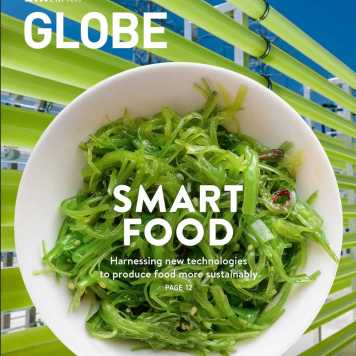
ETH GLOBE magazine focuses on innovative research from Flagship Project on algae and insects protein sources for the future.
Turning hype into real alternatives by Corinne Johannssen
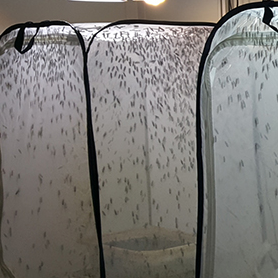
Forbes magazine on insect sustainability refers to study on sustainable use of black soldier fly larvae biomass for feed and food.
external page Can Using Insects As Animal Feed Reduce The Climate Impact Of Meat Production? by Banis, D.
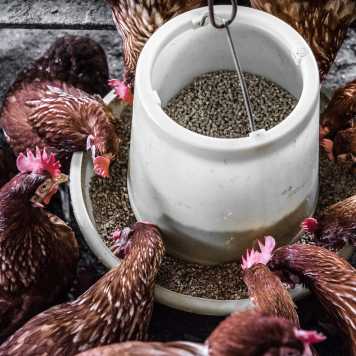
Article in New Scientist features project study on the sustainable use of black soldier fly larvae biomass for feed and food.
external page The super fly that could feed us, end waste and make plastic and fuel by Adam, D.
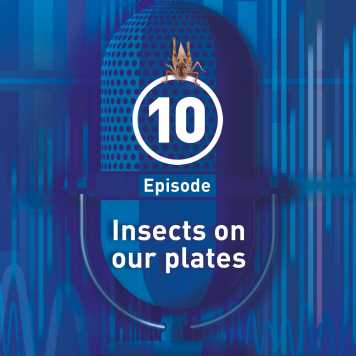
What are the benefits for humans and the environment if more insects instead of meat end up on our plates? Prof. Alexander Mathys and Dr. Christina Hartmann talk about their research in the ETH Podcast "Insects on our plates." Listen here
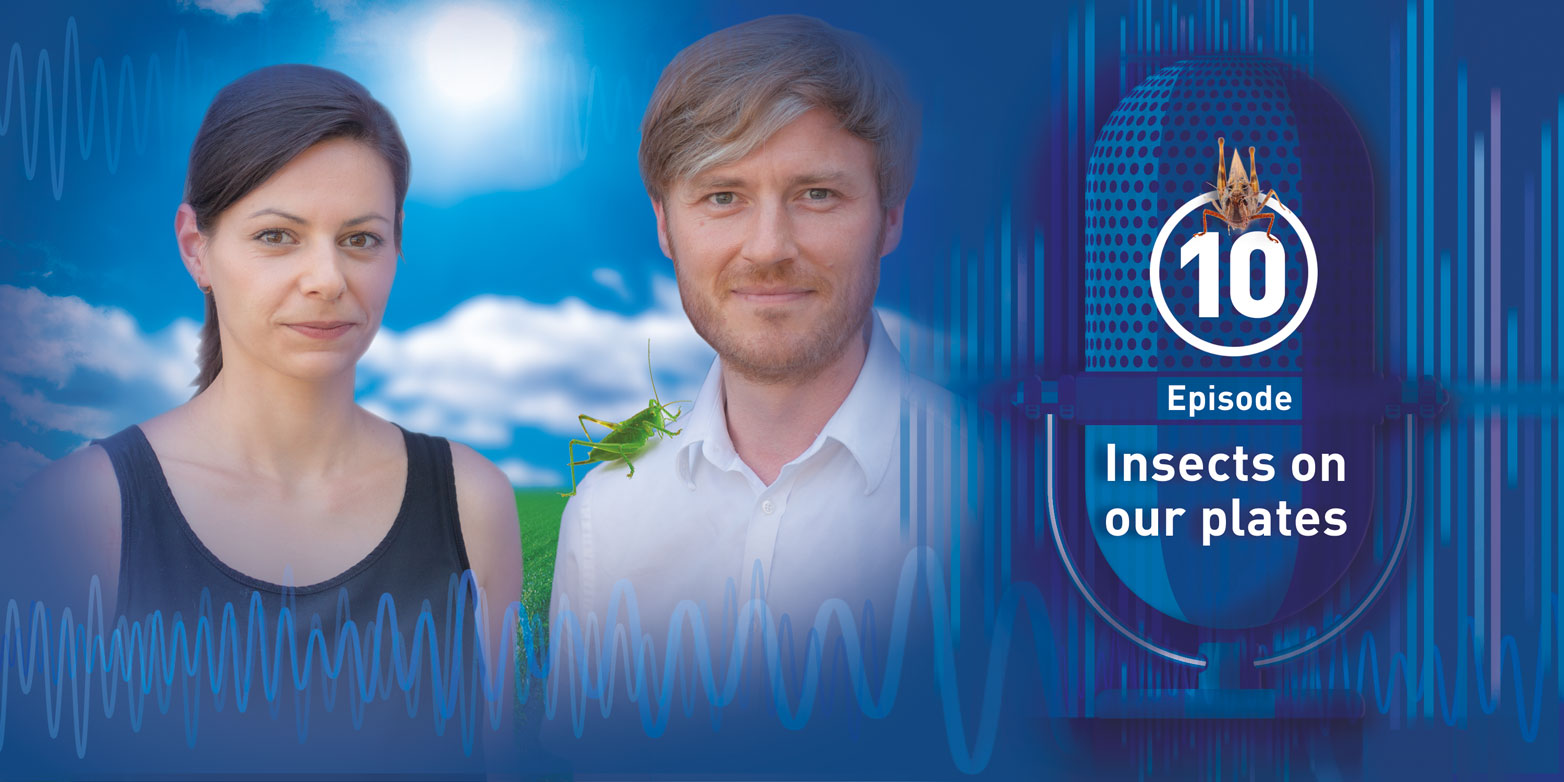

German 3sat Nano science program features project on the use of black soldier fly larvae as feed, interview with Prof. Alexander Mathys and Moritz Gold. Watch the eposide (in German, start 11:30) external page here
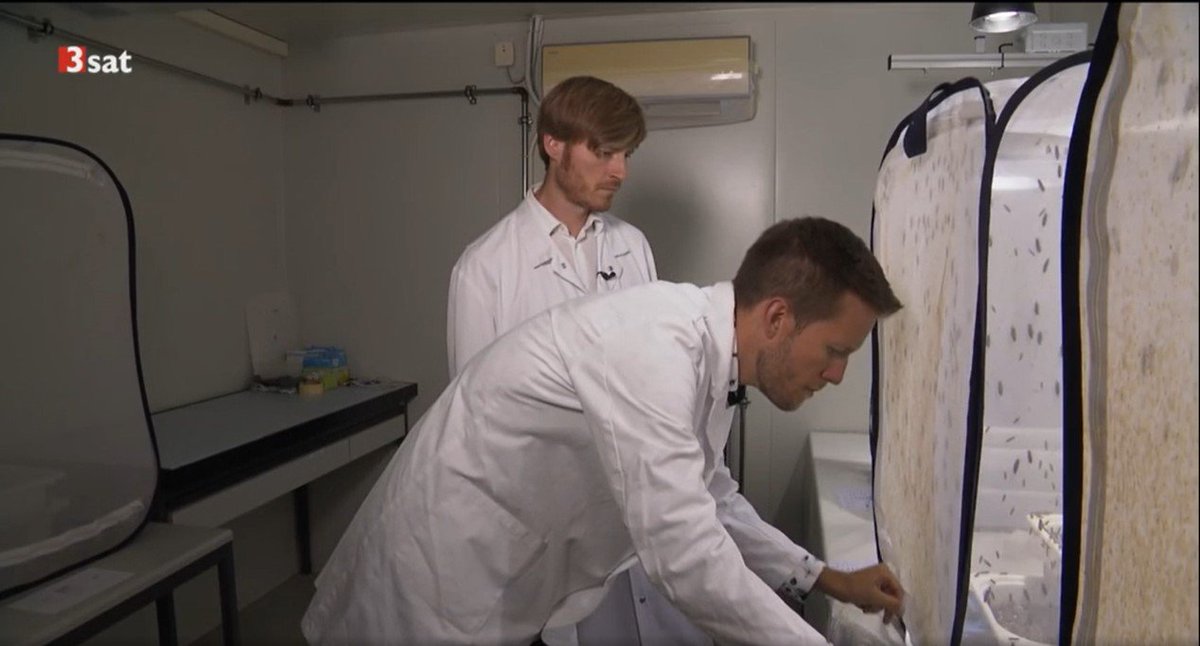
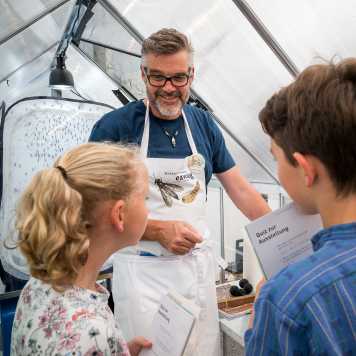
At the special show "Experience Food" at the Swiss Fair for Agriculture and Nutrition (Olma), visitors of all ages learned about the wonders of grains, from the field to the plate. ETH Zurich presented an exhibit at the show highlighting its innovative research, including the Sustainable Food Processing group and SANDEC team discussing BSF use for feed. Read more
For the year long reporting series “Race to Feed the World,” the Frankfurter Allgemeine newspaper features stories about how we can provide sustainable nutrition for all. Prof. Alexander Mathys focused on his work studying algae and insects as protein sources of the future. Read more in WFSC News
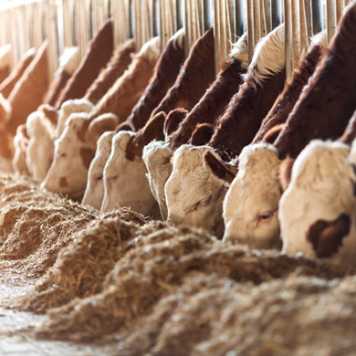
Neue Zürcher Zeitung am Sonntag newspaper article focuses on Swiss firms and research from ETH Zurich and Eawag advancing the use of black solder fly larvae for feed. The research of Flagship members Prof. Alexander Mathys and Dr. Christian Zurbrügg is featured. Read more in WFSC News
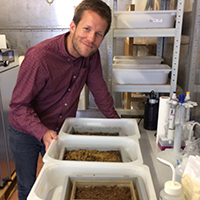
ETH News article focuses on the research of Moritz Gold, doctoral student in the group of ETH Zurich professor Alexander Mathys. Gold’s interests lie in novel systems for waste management and using waste as a sustainable resource for urban development. Read article

